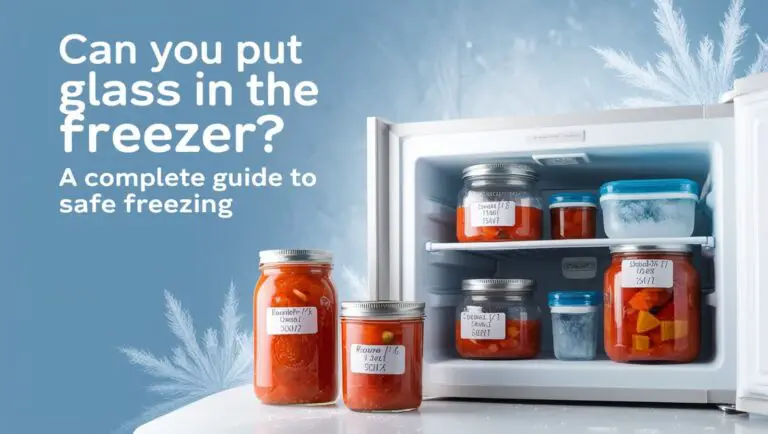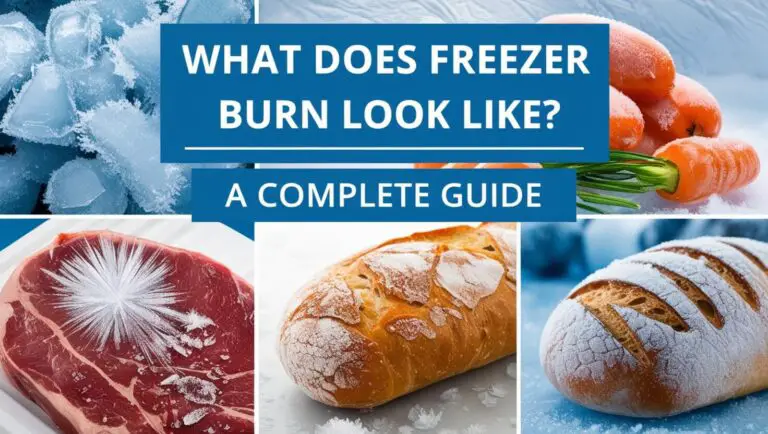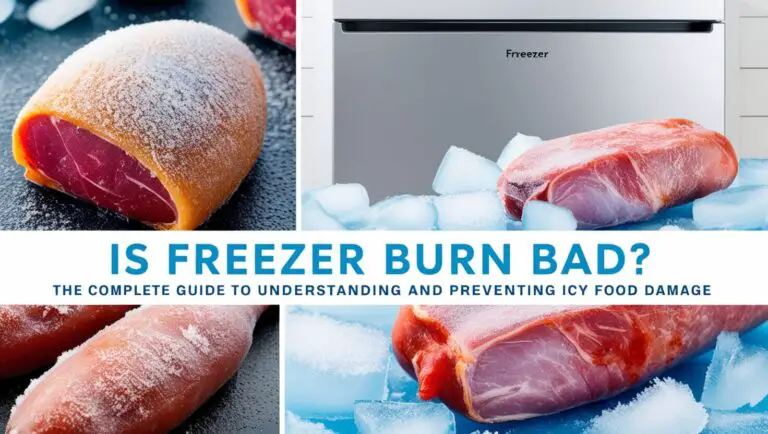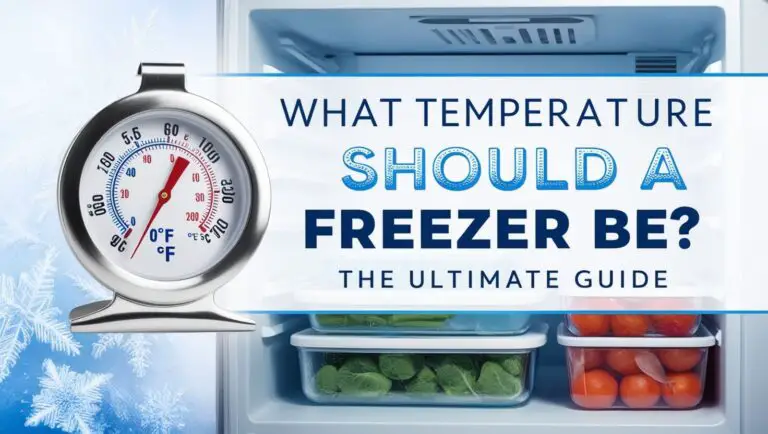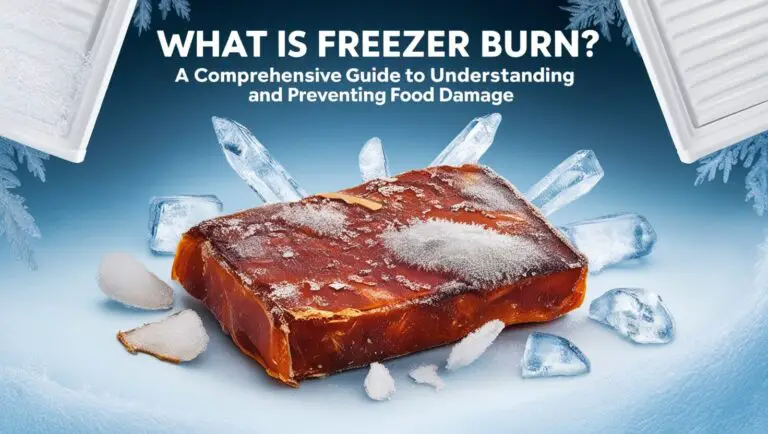How to Defrost a Freezer: A Complete Guide
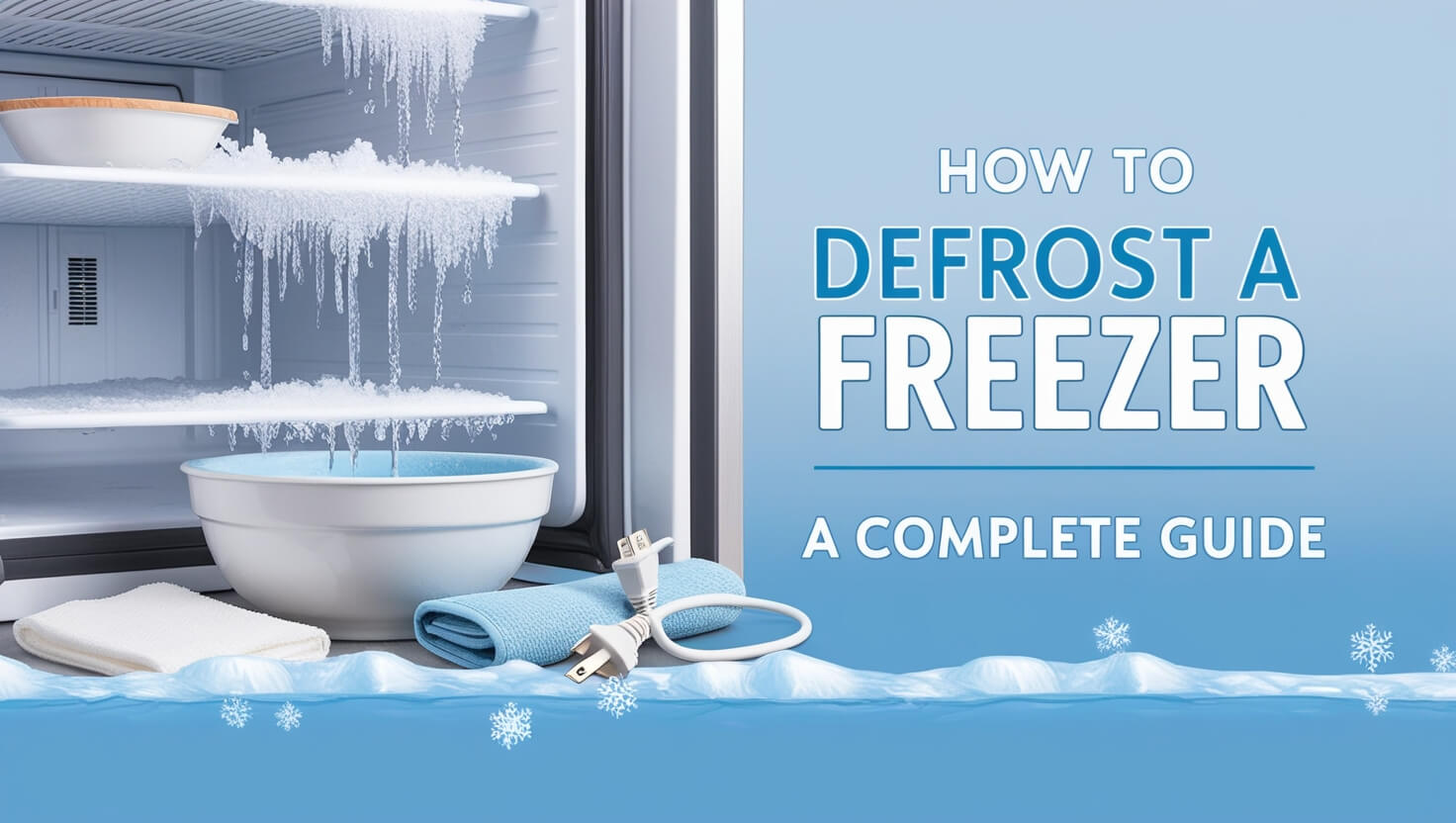
Is your freezer looking more like an ice cave than a food storage unit? Don’t worry, you’re not alone. Many of us struggle with frost buildup in our freezers, but the good news is that defrosting your freezer is a simple process that anyone can do. In this comprehensive guide, we’ll walk you through everything you need to know about how to defrost a freezer, from why it’s important to do it regularly to step-by-step instructions and quick methods for those in a hurry.
Defrosting your freezer involves removing the accumulated ice and frost from its interior. This process typically takes a few hours to a day, depending on the amount of ice buildup and the method you choose. By following our guide, you’ll be able to defrost your freezer safely and efficiently, ensuring it runs at peak performance and keeps your food properly frozen.
Why Defrost Your Freezer?
Before we dive into the how-to, let’s talk about why defrosting your freezer is so important. You might be wondering if it’s really necessary, especially if your freezer seems to be working fine. The truth is, regular defrosting offers several benefits that can save you money and keep your food fresher.
Benefits of Regular Defrosting
- Improved Energy Efficiency: A frost-free freezer uses less energy to maintain its temperature, which can lead to lower electricity bills.
- More Storage Space: As ice builds up, it takes up valuable space that could be used for storing food.
- Better Freezer Performance: Excessive frost can interfere with the freezer’s cooling system, making it work harder to maintain the proper temperature.
- Longer Appliance Lifespan: Regular maintenance, including defrosting, can help your freezer last longer.
- Prevent Freezer Burn: Proper airflow in a frost-free freezer can help reduce the likelihood of freezer burn on your food.
Signs Your Freezer Needs Defrosting
How do you know when it’s time to defrost? Look out for these telltale signs:
- Ice buildup of 1/4 inch or more on the freezer walls
- Difficulty closing the freezer door due to frost
- Visible frost on food packages
- Reduced cooling efficiency
- Unusual noises coming from the freezer
If you notice any of these signs, it’s time to roll up your sleeves and get defrosting!
Preparing to Defrost Your Freezer
Before you start the defrosting process, it’s important to prepare properly. This will make the job easier and help protect your food and kitchen from potential water damage.
Gathering Necessary Supplies
Here’s what you’ll need to defrost your freezer:
- Towels or old newspapers
- Plastic containers or bowls
- A plastic scraper or spatula
- Cleaning cloths
- Warm, soapy water
- A cooler or insulated bags for food storage
Storing Frozen Food During the Process
One of the biggest concerns when defrosting a freezer is what to do with all your frozen food. Here are some tips:
- Use a cooler: Transfer your frozen items to a cooler with ice packs to keep them cold.
- Borrow space: If you have a friend or neighbor with extra freezer space, ask if you can store your food there temporarily.
- Plan ahead: Try to use up as much frozen food as possible in the days leading up to defrosting.
- Work quickly: If you use a fast defrosting method, your food may stay frozen enough in the cooler for a short period.
Remember, any food that has started to thaw should be cooked immediately or discarded if you’re unsure about its safety.
Safety Precautions
Safety should always be your top priority when working with electrical appliances. Follow these precautions:
- Unplug the freezer: Always disconnect the power before you start defrosting.
- Avoid sharp objects: Don’t use knives or other sharp tools to remove ice, as this can damage the freezer.
- Keep water away from electrical components: Be careful not to let water come into contact with any electrical parts of the freezer.
- Use caution with electrical devices: If you’re using a hair dryer or other electrical device to speed up defrosting, be extremely careful to avoid electric shock.
Step-by-Step Guide to Defrosting a Freezer
Now that you’re prepared, let’s walk through the process of how to defrost a freezer, step by step.
Turning Off and Unplugging the Freezer
The first step in defrosting your freezer is to turn it off and unplug it from the wall. This is crucial for your safety and will help the defrosting process go more quickly.
Removing Contents and Shelves
Take everything out of the freezer, including food, ice trays, and removable shelves or drawers. Store the food in your prepared cooler or alternate freezer space.
Catching Melting Water
Place towels or newspapers on the floor in front of the freezer to catch any water that may spill out. Put a shallow pan or tray on the bottom shelf of the freezer to catch water as the ice melts.
Methods for Defrosting
There are several methods you can use to defrost your freezer. Let’s explore each one:
1. Natural Defrosting
This is the simplest method but takes the longest time.
- Leave the freezer door open and let the ice melt naturally.
- This method can take up to 24 hours for a very frosty freezer.
- It’s safe and gentle on your appliance but requires patience.
2. Using a Fan
Speed up natural defrosting by using a fan:
- Position a fan to blow room-temperature air into the freezer.
- This can significantly reduce defrosting time compared to natural melting.
3. Hot Water Method
For a quicker defrost:
- Place bowls of hot water inside the freezer.
- Close the door and let the steam help melt the ice.
- Replace the water every 15 minutes to maintain effectiveness.
- Be careful when handling hot water to avoid burns.
4. Hair Dryer Technique
For targeted defrosting:
- Use a hair dryer on its lowest setting to blow warm air at ice buildup.
- Keep the dryer moving to avoid overheating any one area.
- Be extremely careful to keep the dryer and cord away from water.
5. Defrosting Sprays
Commercial defrosting sprays are available:
- Follow the instructions on the product carefully.
- These can be effective but may have a strong odor.
- Ensure the spray is safe for use with food storage areas.
Removing Ice Buildup Safely
As the ice begins to melt:
- Use a plastic scraper or spatula to gently remove loosened ice.
- Never use metal tools or sharp objects, as these can damage the freezer interior.
- Be patient and let the ice soften before attempting to remove it.
Cleaning the Freezer Interior
Once the ice is gone:
- Wipe down the interior with a solution of warm water and mild dish soap.
- For tough stains, use a mixture of baking soda and water.
- Clean all surfaces, including door seals and gaskets.
Drying and Reassembling
Before turning your freezer back on:
- Dry all interior surfaces thoroughly with clean towels.
- Replace shelves and drawers.
- Make sure the door seal is clean and dry to ensure a proper seal.
How to Defrost a Freezer Quickly
Sometimes you need to defrost your freezer in a hurry. Here are some time-saving techniques:
Time-saving Techniques
- Combination Method: Use hot water bowls and a fan simultaneously for faster melting.
- Wet Towel Technique: Soak towels in hot water, wring them out, and place them on ice buildup. Replace as they cool.
- Steam Cleaning: If you have a handheld steam cleaner, use it to direct steam at ice patches (be cautious of electrical components).
- Alcohol Solution: For thin frost layers, a mixture of rubbing alcohol and hot water on a cloth can help melt ice quickly.
Pros and Cons of Rapid Defrosting
Pros:
- Saves time
- Allows you to use your freezer sooner
- Minimizes food thawing risk
Cons:
- May use more energy (if using electrical devices)
- Higher risk of damaging the freezer if not done carefully
- Can be more labor-intensive
Defrosting Different Types of Freezers
Different freezer types may require slightly different approaches. Here’s how to handle various models:
Upright Freezers
- Usually easier to defrost due to vertical orientation
- Remove items from top to bottom as you defrost
- Pay special attention to door seals and gaskets
Chest Freezers
- Can be more challenging due to their deep design
- Consider using a fan to circulate air more effectively
- Use towels or sponges to soak up water at the bottom
Fridge-freezer Combinations
- Defrost the freezer section separately if possible
- Protect refrigerated items from temperature changes
- Check if your model has a defrost drain to direct water
Maintaining Your Freezer Post-Defrost
After defrosting, proper maintenance can help prevent quick frost buildup:
Proper Organization Tips
- Don’t overfill: Leave space for air circulation.
- Use airtight containers: This reduces moisture in the freezer.
- Label and date items: This helps you use older items first.
- Group similar items: This reduces door-open time when searching for food.
Temperature Settings
- Set your freezer to 0°F (-18°C) for optimal performance.
- Use a freezer thermometer to check temperature regularly.
- Adjust settings as needed, especially after defrosting.
Door Seal Maintenance
- Clean the door seal regularly with mild soap and water.
- Check for cracks or tears and replace if necessary.
- Ensure the door closes properly to prevent warm air from entering.
Preventing Excessive Frost Buildup
Prevention is key to reducing how often you need to defrost your freezer.
Causes of Frost Accumulation
- Frequent door opening
- Storing hot foods without cooling first
- Humid environment
- Faulty door seals
- Overloading the freezer
Best Practices to Minimize Frost
- Limit door opening time
- Cool hot foods before freezing
- Wrap foods properly to reduce moisture
- Keep the freezer full, but not overcrowded
- Regularly check and clean door seals
Humidity Control Techniques
- Use a dehumidifier in your kitchen if humidity is high.
- Consider silica gel packets in the freezer to absorb excess moisture.
- Ensure good ventilation around your freezer.
Troubleshooting Common Defrosting Issues
Even with careful preparation, you might encounter some challenges. Here’s how to handle them:
Dealing with Stubborn Ice
- For thick ice, use the hot water method and be patient.
- Never chip at ice with sharp objects.
- If ice won’t budge, let the freezer warm up more before trying again.
Addressing Water Leakage
- Check that the defrost drain isn’t blocked.
- Ensure towels are positioned to catch all runoff.
- Use a turkey baster to remove water from hard-to-reach areas.
Handling Odors During Defrosting
- Place an open box of baking soda in the freezer during and after defrosting.
- Clean thoroughly with a vinegar solution to neutralize odors.
- Leave the door open for a few hours after cleaning to air out the freezer.
Frequently Asked Questions About Freezer Defrosting
Let’s address some common questions about how to defrost a freezer:
How often should I defrost my freezer?
Most freezers need defrosting once or twice a year. However, if you notice more than 1/4 inch of frost buildup, it’s time to defrost regardless of the timeline.
Can I use sharp objects to remove ice?
No, sharp objects can damage the freezer’s interior and potentially puncture cooling coils. Always use plastic scrapers or let the ice melt naturally.
Is it safe to eat partially thawed food?
It depends on the food type and how long it’s been partially thawed. As a general rule, if food still contains ice crystals, it’s usually safe to refreeze. However, raw meats that have begun to thaw should be cooked immediately.
How long does defrosting typically take?
Defrosting can take anywhere from 2 to 24 hours, depending on the method used and the amount of frost buildup.
Can I defrost a freezer without turning it off?
It’s not recommended. Trying to defrost while the freezer is running is inefficient and can be dangerous if water comes into contact with electrical components.
Energy Efficiency and Defrosting
Regular defrosting isn’t just about convenience; it’s also about energy efficiency.
Impact of Frost on Energy Consumption
- Frost acts as an insulator, making your freezer work harder to maintain temperature.
- A frosty freezer can use up to 30% more energy than a frost-free one.
- Regular defrosting can lead to significant energy savings over time.
Energy-saving Tips During Defrosting
- Plan to defrost when your freezer is least full to minimize food transfer.
- Use natural methods when possible to avoid additional electricity use.
- Clean coils and vents during defrosting to improve overall efficiency.
- Check and adjust temperature settings after defrosting.
Choosing Energy-efficient Freezer Models
- Look for Energy Star certified models when replacing your freezer.
- Consider frost-free models that automatically prevent frost buildup.
- Upright freezers are generally more energy-efficient than chest freezers.
When to Call a Professional
While defrosting is usually a DIY task, sometimes professional help is needed.
Signs of Serious Freezer Problems
- Constant cycling or running
- Excessive noise
- Failure to maintain proper temperature
- Visible damage to coils or compressor
- Persistent odors even after cleaning
Benefits of Professional Maintenance
- Identify and fix potential issues before they become major problems
- Ensure optimal performance and energy efficiency
- Extend the lifespan of your appliance
- Professional cleaning of hard-to-reach components
If you’re uncomfortable with any aspect of defrosting or notice ongoing issues with your freezer, don’t hesitate to contact a professional appliance repair service.
Let’s Complete
Learning how to defrost a freezer is an essential skill for any homeowner or renter. By following the steps outlined in this guide, you can keep your freezer running efficiently, save on energy costs, and ensure your food stays properly preserved.
Remember, regular defrosting is key to maintaining your freezer’s performance. Whether you choose the natural method or opt for quicker techniques, always prioritize safety and follow the manufacturer’s recommendations for your specific model.
By incorporating regular defrosting into your home maintenance routine, you’ll enjoy a more efficient appliance, more storage space, and potentially lower energy bills. So, the next time you notice frost building up in your freezer, you’ll be well-equipped to tackle the task with confidence.
Happy defrosting!

